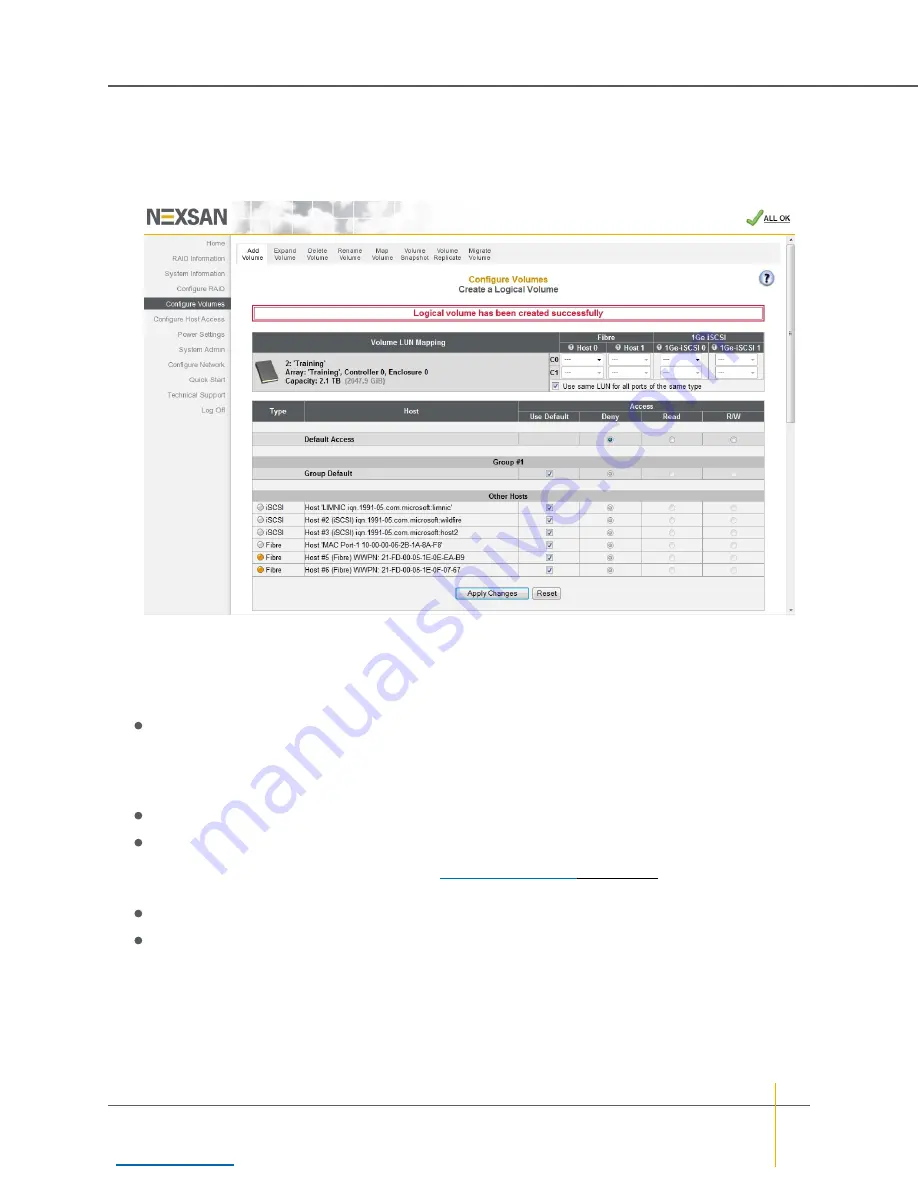
5. When you have entered all of the required information, click
Create Volume
.
A message is displayed, informing you that the volume as been created, and you are prompted to assign
the logical unit numbers (LUNs) and host port access:
Figure 2-8: Volume mapping tool
6. In the
Volume LUN Mapping
section, assign a logical unit number (LUN) for each port that the volume will
be accessed through. Check the
Use same LUN for all ports of the same type
check box to have all
Fibre Channel, SAS-to-Host, 10GbE, or iSCSI ports use the same LUN mapping.
7. Set the
Default Access
(applied to new or unknown hosts) by selecting
Deny
,
Read
, or
R/W
:
Select
Deny
to prevent all new or unknown hosts from accessing the volume. This is the default
setting.
Note
It is recommended to leave the
Default Access
setting as
Deny
and then grant access to
specific hosts as necessary. This prevents unconfigured hosts from modifying existing data.
Select
Read
to allow read-only access to the volume for all new or unknown hosts.
Select
R/W
to allow read/write access to the volume for all new or unknown hosts.
8. If at least one host group has been created (see
on page 175), set the
Group
Default
by checking or unchecking the box in the
Use Default
column:
If
Use Default
is checked, this setting is the same as
Default Access
. This is the default setting.
If
Use Default
is unchecked, this setting overrides the
Default Access
setting. You can select
Deny
,
Read
, or
R/W
as the default for all host groups.
Chapter 2: Common Tasks — Configure volumes on a RAID array
Nexsan High-Density Storage
User Guide
47






























